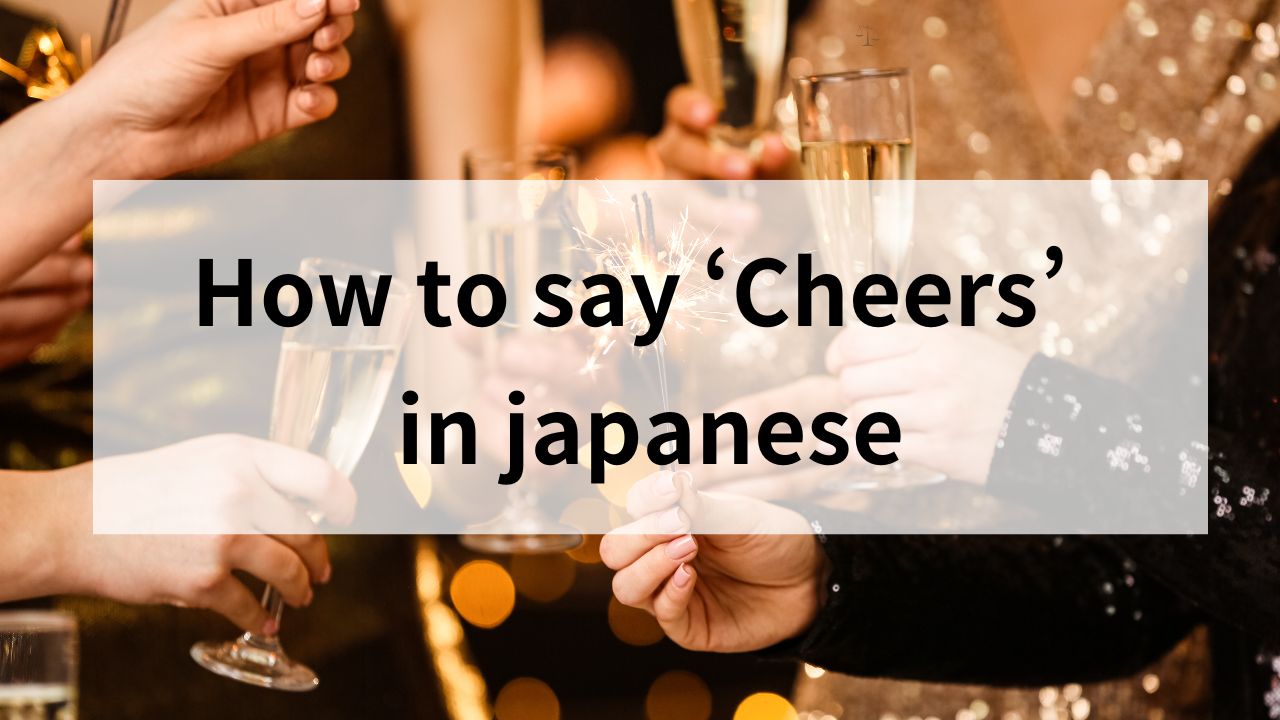Are you curious about how to say “cheers” in Japanese? The expression “cheers” is commonly used in social situations, especially when toasting drinks. In Japan, the equivalent phrase is often used during gatherings, celebrations, and meals. This guide will explore how to say “cheers” in Japanese, its cultural context, and practical applications.
How Do You Say “Cheers” in Japanese?
The Japanese word for “cheers” is 乾杯 (Kanpai). This term is widely recognized and used in both casual and formal settings. Kanpai literally translates to “dry cup,” emphasizing the act of emptying your glass during a toast.
The Japanese Word for Cheers: Kanpai (乾杯)
“Kanpai” is used to encourage everyone to raise their glasses and drink together. It is customary to say “kanpai” before taking the first sip of a drink at social events. Here are a few examples of how it’s used:
- 皆さん、乾杯! (Minasan, kanpai!): “Everyone, cheers!”
- この素晴らしい日を乾杯! (Kono subarashii hi o kanpai!): “Cheers to this wonderful day!”
- 友達と乾杯する (Tomodachi to kanpai suru): “To toast with friends.”
Cultural Context of Kanpai
The act of saying “kanpai” is deeply rooted in Japanese culture. It signifies camaraderie and respect among participants. It is a way to foster connections and celebrate occasions, whether it’s a birthday, a wedding, or simply a night out with friends.
Does Saying “Cheers” Work in Japan?
The English word “cheers” is rarely understood in Japan, especially in social or drinking contexts. While younger Japanese people or those familiar with English might recognize it, most people will not associate it with a toast. To avoid confusion and show cultural appreciation, it’s best to use the Japanese term “kanpai” (乾杯), which is universally understood and commonly used during toasts in Japan.
The Significance of Kanpai in Japanese Culture
Kanpai is more than just a phrase; it encapsulates the spirit of togetherness and appreciation in Japanese gatherings. Understanding its significance can enhance your social interactions in Japan.
Kanpai as a Social Ritual
When participating in a toast, it’s customary to make eye contact with others as you say “kanpai.” This practice reinforces social bonds and signifies mutual respect among participants.
Kanpai and Hierarchical Relationships
In professional settings, it’s important to follow social hierarchy during a toast. The most senior person typically initiates the “kanpai,” and everyone should wait for their cue before raising their glasses.
The “Toriaezu Nama” Tradition
In Japan, it’s common to hear the phrase 「とりあえず生」 (Toriaezu Nama), meaning “Let’s start with a draft beer,” during the first round of drinks. This phrase reflects a cultural habit of ordering beer as the default drink for toasts, regardless of individual preferences. It emphasizes the communal spirit of starting the meal together with a shared choice, symbolizing unity and harmony in the group.
While people may switch to other beverages later in the evening, the initial toast with beer is a widely practiced tradition. Saying “Kanpai” (乾杯) with a glass of beer is a quintessential part of the Japanese drinking culture.
Practical Applications of “Kanpai” in Japan
Learning how to use “kanpai” can help you navigate social situations, understand Japanese dining etiquette, and make a positive impression during gatherings.
Using Kanpai in Daily Conversations
Here are some examples of how “kanpai” can be incorporated into daily conversations:
- 飲みに行こう!乾杯しよう!(Nomi ni ikou! Kanpai shiyou!): “Let’s go for drinks! Let’s cheers!”
- 新しい仕事に乾杯!(Atarashii shigoto ni kanpai!): “Cheers to the new job!”
Kanpai-Related Expressions
In addition to “kanpai,” there are other expressions related to toasting and drinking in Japanese culture:
- お疲れ様 (Otsukaresama): A phrase used to thank someone for their hard work, often exchanged before a toast.
- いただきます (Itadakimasu): Said before eating, but often used before a toast to express gratitude for the meal.
- ごちそうさまでした (Gochisousama deshita): Said after eating to thank the host or chef, often followed by a toast to celebrate the meal.
These expressions enhance the cultural experience of dining and socializing in Japan, reflecting the importance of gratitude and respect.
FAQs
Here are some frequently asked questions about “kanpai” and its usage in Japanese culture.
Is Kanpai Used in Formal Settings?
Yes, “kanpai” is appropriate in both casual and formal settings, but it’s essential to observe social customs and hierarchy, especially in business contexts.
How Do You Respond to Kanpai?
When someone says “kanpai,” the standard response is to raise your glass and say “kanpai” back before taking a sip. It’s a way of acknowledging the toast and participating in the moment.
Conclusion
Kanpai, or “cheers” in Japanese, is a meaningful expression that embodies the spirit of togetherness and respect in Japanese culture. By understanding its significance and proper usage, you can enhance your social experiences and appreciate the rich traditions of Japan.








